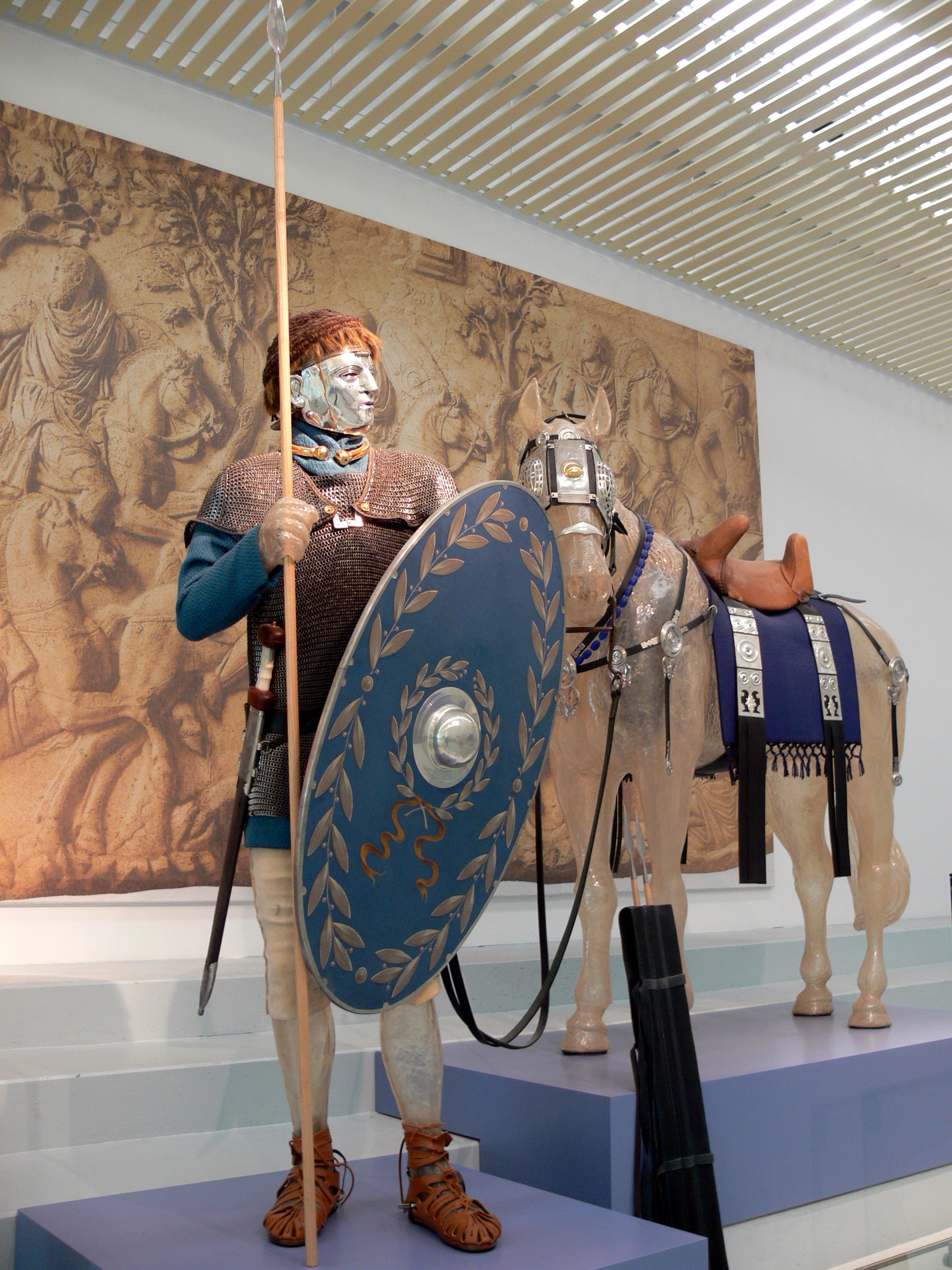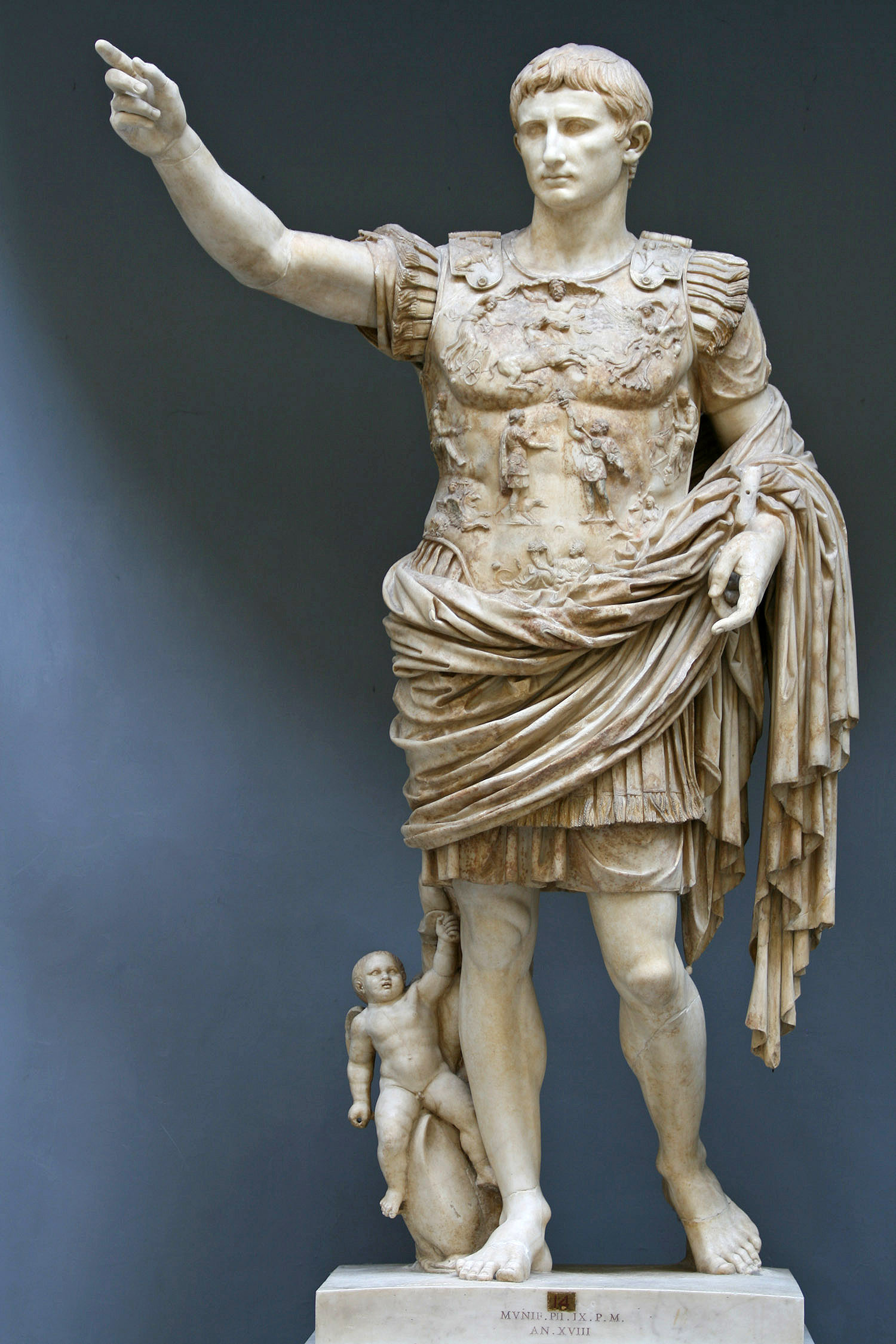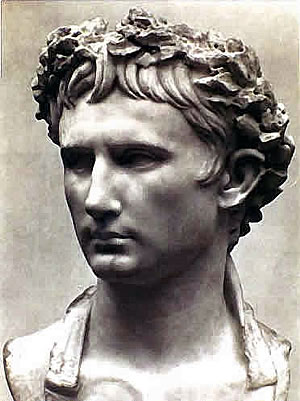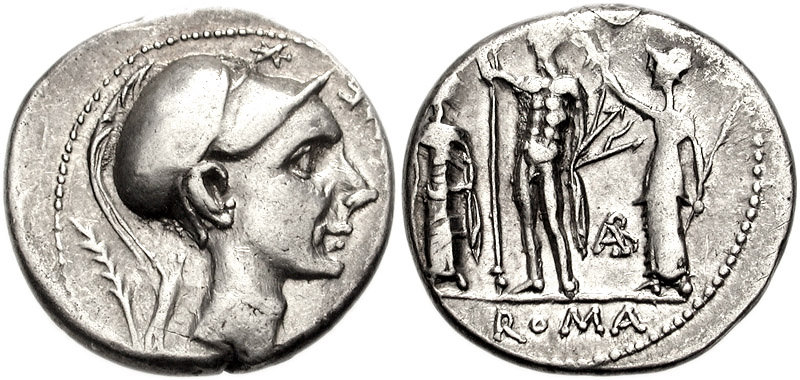|
Turma
A ''turma'' (; plural ''turmae''; ) was a cavalry unit in the Roman army of the Republic and Empire. In the Byzantine Empire, it became applied to the larger, regiment-sized military-administrative divisions of a '' thema''. The word is often translated as " squadron" but so is the term '' ala'', a unit that was made up of several ''turmae''. Roman army Republic In the 3rd and 2nd centuries BC, the time of the Punic Wars and Rome's expansion into Spain and Greece, the core of the Roman army was formed by citizens, augmented by contingents from Rome's allies (''socii''). The organization of the Roman legion of the period is described by the Greek historian Polybius (cf. the so-called " Polybian army"), who writes that each 4,200-strong infantry legion was accompanied by 300 citizen cavalry (''equites''). This contingent was divided into ten ''turmae''.. According to Polybius, the squadron members would elect as their officers three '' decuriones'' ("leaders of 10 men"), of whom the ... [...More Info...] [...Related Items...] OR: [Wikipedia] [Google] [Baidu] |
Ala (Roman Cavalry Unit)
The (; ) were introduced as non-citizen troops attached to the citizen legions by Augustus after his reorganisation of the Imperial Roman army from 27 BC. By the 2nd century, the contained the same number of infantry as the legions and, in addition, provided almost all of the Roman army's cavalry (especially light cavalry and archers) and more specialised troops. The thus represented three-fifths of Rome's regular land forces at that time. Like their legionary counterparts, auxiliary recruits were mostly volunteers, not conscripts. The were mainly recruited from the '' peregrini'', free provincial subjects who did not hold Roman citizenship and constituted the vast majority of the population in the 1st and 2nd centuries (c. 90% in the early 1st century). In contrast to the legions, which only admitted Roman citizens, members of the could be recruited from territories outside of Roman control. Reliance on the various contingents of non- Italic troops, especially cav ... [...More Info...] [...Related Items...] OR: [Wikipedia] [Google] [Baidu] |
Auxiliaries (Roman Military)
The (; ) were introduced as non-citizen troops attached to the citizen Roman legion, legions by Augustus after his reorganisation of the Imperial Roman army from 27 BC. By the 2nd century, the contained the same number of infantry as the legions and, in addition, provided almost all of the Roman army's Roman cavalry, cavalry (especially light cavalry and horse archer, archers) and more specialised troops. The thus represented three-fifths of Rome's regular land forces at that time. Like their legionary counterparts, auxiliary recruits were mostly volunteers, not conscripts. The were mainly recruited from the ''peregrinus (Roman), peregrini'', free provincial subjects who did not hold Roman citizenship and constituted the vast majority of the population in the 1st and 2nd centuries (c. 90% in the early 1st century). In contrast to the legions, which only admitted Roman citizenship, Roman citizens, members of the could be recruited from territories outside of Roman contro ... [...More Info...] [...Related Items...] OR: [Wikipedia] [Google] [Baidu] |
Imperial Roman Army
The Imperial Roman Army was the military land force of the Roman Empire from 27 BC to 476 AD, and the final incarnation in the long history of the Roman army. This period is sometimes split into the Principate (27 BC – 284 AD) and the Dominate (284–476) periods. Under Augustus (), the army consisted of Roman legion, legions, eventually and also ''Numerus (Roman military unit), numeri''. By the end of Augustus' reign, the imperial army numbered some 250,000 men, equally split between 25 legions and 250 units of auxiliaries. The numbers grew to a peak of about 450,000 by 211, in 33 legions and about 400 auxiliary units. By then, auxiliaries outnumbered legionaries substantially. From this peak, numbers probably underwent a steep decline by 270 due to plague and losses during multiple major invasions by the Germanic Tribal Folk. Numbers were restored to their early 2nd-century level of c. 400,000 (but probably not to their 211 peak) under Diocletian (r. 284–305). After the E ... [...More Info...] [...Related Items...] OR: [Wikipedia] [Google] [Baidu] |
Decurion (Roman Cavalry Officer)
A decurion (Latin: ''decurio''; : ''decuriones'') was a Roman cavalry officer in command of a squadron (''turma'') of cavalrymen in the Roman army. Republican army During the Roman Republic a "Polybian" legion ( BC) of citizen-levies had a cavalry complement of 300 horse, divided into 10 ''turmae'' (squadrons) of 30 men each. Each ''turma'' was led by three decurions, who were elected by the squadron members themselves. Although ''decurio'' (), it does not appear that a ''turma'' was sub-divided into three troops of ten men each. Instead, one decurion would act as squadron commander and the other two as his deputies.Polybius VI.25 Imperial army In the Imperial Roman army of the Principate (30 BC – AD 284), a decurion also commanded a cavalry ''turma'' of men, but now without colleagues. In common with all soldiers in the imperial army, decurions were long-service professionals, the majority volunteers. A Roman imperial legion, which contained men, contained a small cav ... [...More Info...] [...Related Items...] OR: [Wikipedia] [Google] [Baidu] |
Equestrian Order
The (; , though sometimes referred to as " knights" in English) constituted the second of the property/social-based classes of ancient Rome, ranking below the senatorial class. A member of the equestrian order was known as an (). Description During the Roman Kingdom and the first century of the Roman Republic, legionary cavalry was recruited exclusively from the ranks of the patricians, who were expected to provide six (hundreds) of cavalry (300 horses for each consular legion). Around 400BC, 12 more of cavalry were established and these included non-patricians (plebeians). Around 300 BC the Samnite Wars obliged Rome to double the normal annual military levy from two to four legions, doubling the cavalry levy from 600 to 1,200 horses. Legionary cavalry started to recruit wealthier citizens from outside the 18 . These new recruits came from the first class of commoners in the Centuriate Assembly organisation, and were not granted the same privileges. By the time of t ... [...More Info...] [...Related Items...] OR: [Wikipedia] [Google] [Baidu] |
Roman Army Of The Mid-Republic
The Roman army of the mid-Republic, also called the manipular Roman army or the Polybian army, refers to the armed forces deployed by the mid-Roman Republic, from the end of the Samnite Wars (290 BC) to the end of the Social War (91–88 BC), Social War (88 BC). The first phase of this army, in its Maniple (military unit), manipular structure (290–c. 130 BC), is described in detail in the ''The Histories (Polybius), Histories'' of the ancient Greek historian Polybius, writing before 146 BC. The central feature of the mid-Republican army was the manipular organisation of its battle line. Instead of a single, large mass (the phalanx formation, phalanx) as in the Early Roman army, the Romans now drew up in three lines () consisting of small units (maniples) of 120 men, arrayed in chessboard fashion, giving much greater tactical strength and flexibility. This structure was probably introduced in c. 300 BC during the Samnite Wars. Also probably dating from this period was the regula ... [...More Info...] [...Related Items...] OR: [Wikipedia] [Google] [Baidu] |
Duplicarius
''Duplarius'' (: ''duplares''), ''duplicarius'' or ''dupliciarius'' was an inferior, low-ranking Roman officer, who received double rations or increased payment valuing the 2nd ration based on their valor. As part of cavalry, one '' decurio'', one duplicarius, and one '' sesquiplarius'' was assigned to one '' turma''. Each duplarius as part of a turma was allowed to have two horses. Golden-badged duplares were named ''Torquati duplares''. See also * List of Roman army unit types This is a list of Roman army units and bureaucrats. *''Accensus'' – Light infantry men in the armies of the early Roman Republic, made up of the poorest men of the army. *''Actuarius'' – A soldier charged with distributing pay and provisions. ... References {{Ancient Rome topics Ancient Roman titles Military ranks of ancient Rome ... [...More Info...] [...Related Items...] OR: [Wikipedia] [Google] [Baidu] |
Roman Legion
The Roman legion (, ) was the largest military List of military legions, unit of the Roman army, composed of Roman citizenship, Roman citizens serving as legionary, legionaries. During the Roman Republic the manipular legion comprised 4,200 infantry and 300 cavalry. After the Marian reforms in 107 BC, the legions were formed of 5,200 men and were restructured around 10 cohorts, the first cohort being double strength. This structure persisted throughout the Principate and Roman Empire, middle Empire, before further changes in the fourth century resulted in new formations of around 1,000 men. Size The size of a typical legion varied throughout the history of ancient Rome, with complements ranging from 4,200 legionaries and 300 ''equites'' (drawn from the wealthier classes – in early Rome all troops provided their own equipment) in the Republic, to 5,500 in the Imperial period, when most legions were led by a Roman Imperial Legate. A legion had 4,800 Legionary, legionaries ( ... [...More Info...] [...Related Items...] OR: [Wikipedia] [Google] [Baidu] |
Ala (Roman Military)
An ''ala'' (Latin for "wing"; ''alae'') was the term used during the middle of the Roman Republic (338–88 BC) to denote a military formation composed of conscripts from the ''socii'', Rome's Italian military allies. A normal consular army during the period consisted of two legions, composed of only Roman citizens, and two allied ''alae''. The ''alae'' were somewhat larger than normal legions, 5,400 or 5,100 men against the legion's 4,500 men, and it contained a greater quantity of cavalry, usually 900 horsemen against the 300 supplied by the Romans. From the time of the first Roman emperor, Augustus (ruled 27 BC – AD 14), the term ''ala'' was used in the professional imperial army to denote a much smaller (), purely cavalry unit of the non-citizen ''auxilia'' corps: see ala (Roman cavalry unit). History When the Roman armies started being composed partly of Roman citizens and partly of ''socii'' (allies from the rest of the Italian mainland), either Latini or Italici, it ... [...More Info...] [...Related Items...] OR: [Wikipedia] [Google] [Baidu] |
Roman Cavalry
Roman cavalry (Latin: ''equites Romani'') refers to the horse-mounted forces of the Roman army throughout the regal, republican, and imperial eras. In the regal era, the Roman cavalry was a group of 300 soldiers called ''celeres'', tasked with guarding the Kings of Rome. Later their numbers were doubled to 600, then possibly 1,800. All of the cavalrymen were patricians. In the republican era, the general name for the cavalry was equites and these united consisted of the equestrian class and the first class, with a group of 300 cavalrymen in every legion. They were divided into 10 groups of 30 men. Each group elected three leaders known as '' decuriones''. Later the Roman cavalry stopped using Roman citizens as cavalrymen and relied on Auxilia and foreign recruits. Roman cavalrymen wore a Corinthian helmet, bronze chestplate, and bronze greaves. Later mail was adopted into the army. Their arms included a lance ('' lancea''), a long sword ('' spatha''), and a short throwi ... [...More Info...] [...Related Items...] OR: [Wikipedia] [Google] [Baidu] |
Ancient Greece
Ancient Greece () was a northeastern Mediterranean civilization, existing from the Greek Dark Ages of the 12th–9th centuries BC to the end of classical antiquity (), that comprised a loose collection of culturally and linguistically related city-states and communities. Prior to the Roman period, most of these regions were officially unified only once under the Kingdom of Macedon from 338 to 323 BC. In Western history, the era of classical antiquity was immediately followed by the Early Middle Ages and the Byzantine period. Three centuries after the decline of Mycenaean Greece during the Bronze Age collapse, Greek urban poleis began to form in the 8th century BC, ushering in the Archaic period and the colonization of the Mediterranean Basin. This was followed by the age of Classical Greece, from the Greco-Persian Wars to the death of Alexander the Great in 323 BC, and which included the Golden Age of Athens and the Peloponnesian War. The u ... [...More Info...] [...Related Items...] OR: [Wikipedia] [Google] [Baidu] |







